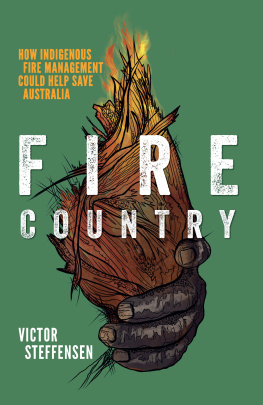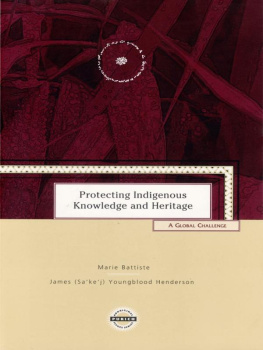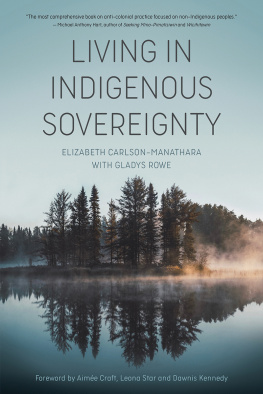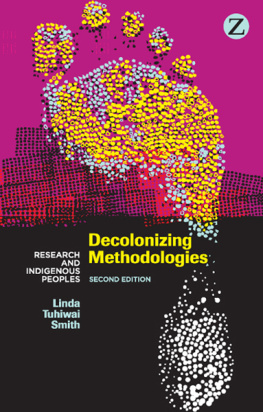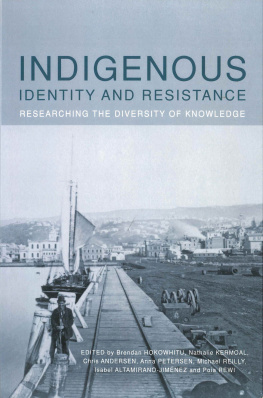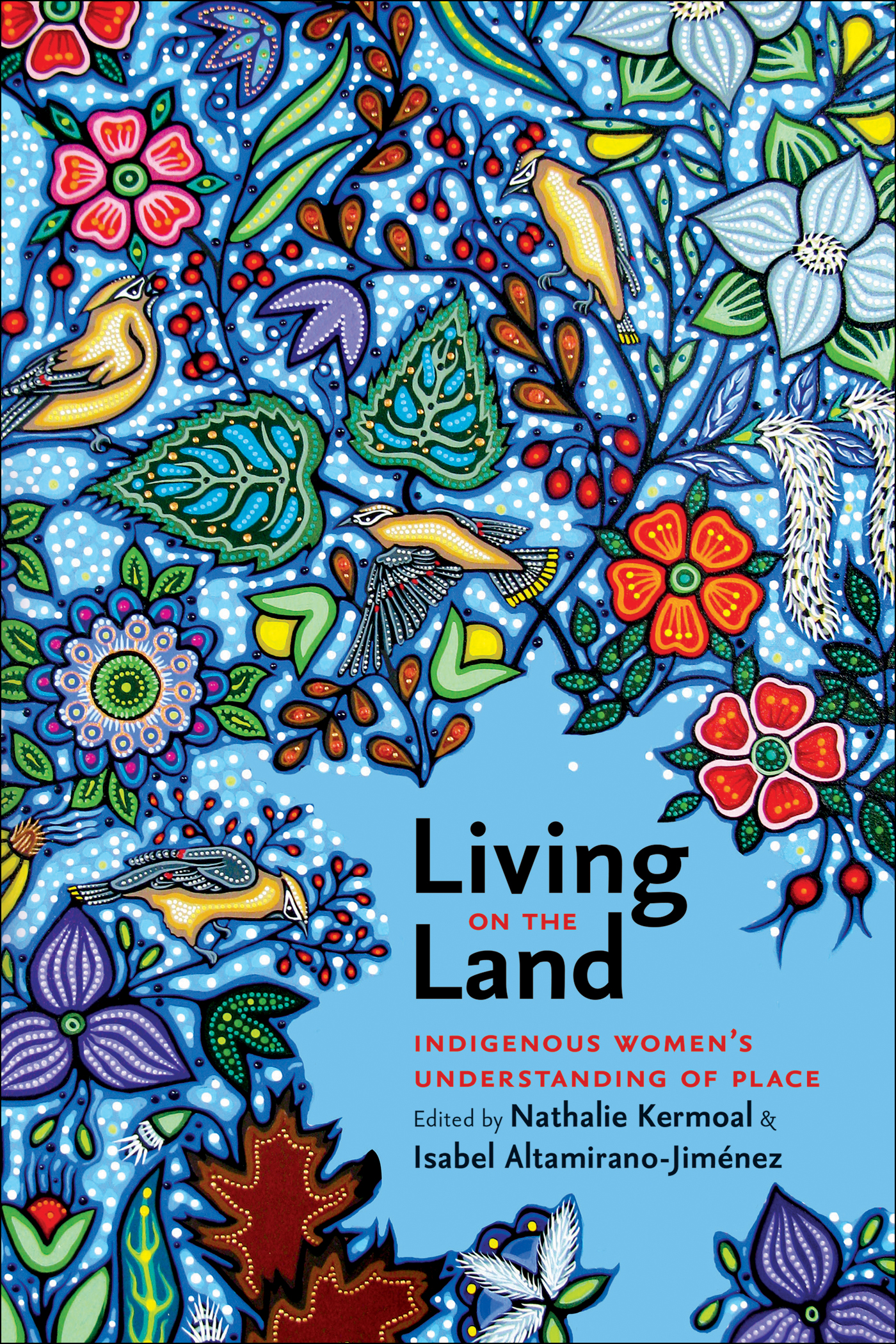Contents
List of Illustrations
List of Tables
Guide
List of Pages
Living on the Land
Living on the Land
Living on the Land
INDIGENOUS WOMENS UNDERSTANDING OF PLACE
Edited by Nathalie Kermoal & Isabel Altamirano-Jimnez

Copyright 2016 Nathalie Kermoal and Isabel Altamirano-Jimnez
Published by AU Press, Athabasca University
1200, 10011 109 Street, Edmonton, AB T5J 3S8
ISBN 978-1-77199-041-7 (pbk.) 978-1-77199-042-4 (PDF) 978-1-77199-043-1 (epub) doi: 10.15215/aupress/9781771990417.01
Cover image by Christi Belcourt, Four Cedar Waxwings. Courtesy of the artist.
Cover design by Natalie Olsen, Kisscut Design
Interior design by Sergiy Kozakov
Printed and bound in Canada by Friesens
Library and Archives Canada Cataloguing in Publication
Living on the land : indigenous womens understanding of place / edited by Nathalie Kermoal and Isabel Altamirano-Jimnez.
Includes bibliographical references and index.
Issued in print and electronic formats.
1. Indigenous women. 2. Place (Philosophy). I. Kermoal, Nathalie J., 1964-, author, editor II. Altamirano-Jimnez, Isabel, author, editor III. Horn-Miller, Kahente, 1972- . Distortion and healing.
HQ1161.L59 2016 305.488 C2016-901373-1
C2016-901374-X
HQ1161.L59 2016 305.488 C2016-901373-1 C2016-901374-X
We acknowledge the financial support of the Government of Canada through the Canada Book Fund (CFB) for our publishing activities.

Assistance provided by the Government of Alberta, Alberta Media Fund.

Please contact AU Press, Athabasca University at for permissions and copyright information.
Contents
Isabel Altamirano-Jimnez and Nathalie Kermoal
Kahente Horn-Miller
Shalene Jobin
Carole Lvesque, Denise Geoffroy, and Genevive Polse
Isabel Altamirano-Jimnez and Leanna Parker
Nathalie Kermoal
Kathy L. Hodgson-Smith and Nathalie Kermoal
Brenda Parlee and Kristine Wray
Zoe Todd
Maps and Figures
Acknowledgments
We are grateful for the generous support of the Human Rights Education and Multiculturalism Fund and the Faculty of Native Studies at the University of Alberta, as well as for the participants contributions.
We would like to extend a special thank-you to the three anonymous readers of the manuscript for their insightful comments and to Nicole Lugosi and Kristine Wray for their diligence and hard work in coordinating this project and preparing the final text. Thank you also to Naomi McIlwraith and J. D. Crookshank for the work they did in editing an earlier version of the manuscript as well as to the editors of Athabasca University Press for their diligent editorial work. And thank you to Christi Belcourt for giving us the authorization to use her amazing artwork on the cover of this book.
We are immensely grateful to you all.

Introduction
Indigenous Women and Knowledge
Isabel Altamirano-Jimnez and Nathalie Kermoal
Inquiry into Indigenous knowledge, as a field of study, has grown at both national and international levels. However, some scholars have questioned whether Indigenous knowledge stands alone as a system, revealing the struggle to validate it vis--vis Western concepts and ways of knowing. Others have pointed out that Indigenous knowledge can be crucial to managing natural resources, mitigating climate change, and revitalizing communities. In looking closely at this body of literature, it is possible to argue that, as a system, Indigenous knowledge is interrelated with territory, kinship, identity, governance, economy, and education (Trask 2007; Moreton-Robinson and Walter 2009; Coulthard 2010). Although scholars have observed that this knowledge is connected to how people inhabit the world, less attention has been devoted to exploring Indigenous womens knowledge. In Indigenous societies, gender roles and responsibilities are delineated on the basis of protocols that shape the survival needs of the collective. The common preoccupation with the practical dimensions of Indigenous knowledge, however, has had the effect of decontextualizing it from the social, economic, political, environmental, and cultural processes in which it is embedded. Regardless of location and size, societies provide their members (men and women) with a sense of being in the world and with pathways to achieve status and recognition. Men and women often make use of different spaces and resources and, for this reason, they are knowers as well as keepers of specific knowledge. Differences between men and womens knowledge result not only from their specific activities and responsibilities but also from the historical and contemporary social context in which this knowledge is produced and mobilized.
Emphasizing Indigenous womens knowledge is important for several reasons. First, communities and individual experiences differ, and being an Indigenous woman is intertwined with lived experience and the worldview of her community. As noted by Aileen Moreton-Robinson and Maggie Walter, Indigenous womens ways of being and belonging are derived from their relationship to country, humans, and ancestral beings (2009, 5). To ignore the specific ways in which Indigenous women know is to undermine them as active producers of knowledge that participate in complex socio-environmental community processes. Second, from an Indigenous womens standpoint approach, it is important that we emphasize that places are connected to broader social and power relations. For example, gender cannot be separated from other systems of domination within which people operate and different degrees of privilege and penalty are accorded (Dhamoon 2015, 30). Power and penalty are accorded simultaneously within and among communities. Thus, a lack of attention to how such systems of domination work often means that Indigenous womens interests and concerns are concealed and erased within and outside their communities (Trask 2007, 296). Indigenous womens experiences are integral to decolonizing knowledge production.
The contributors to this book, the majority of whom are Indigenous, aim at grounding Indigenous womens knowledge in the land both historically and presently. They also explore the ways in which Indigenous women have resisted colonial attempts to assimilate and subordinate them. The chapters in this book represent Indigenous womens experiences beyond their domestic role and insists on connecting them to a variety of tasks within and beyond the household. To this end, the book aspires to prevent the continued neglect of Indigenous womens knowledge and contribution to their peoples and society at large. We do not mean to suggest by our emphasis on womens knowledge of land that womens participation in the production of knowledge is limited to the land and territory. Others have challenged prevalent representations of Indigenous womens domesticity by demonstrating how their work and labour have contributed to their urban households and communities economy while subsidizing the market sector (Williams 2012). We do not theorize Indigenous knowledge as a practice either. Instead, the purpose of this book is to highlight the diversity of womens experiences by exploring and examining the lives of women as they are evidenced in oral history, interviews, economic processes, and life histories. The interpretative approaches pursued by the authors show the breadth of Indigenous womens knowledge while noting its ontological and epistemological commonalities (Moreton-Robinson and Walter 2009). As the editors of this volume, we think the complexity of Indigenous womens knowledge and experiences cannot be captured by a single methodological approach. In addressing the differences as well as the commonalities, this book seeks to reveal the systems of domination that shape womens interactions with the land, the environment, the community, and the knowledge production process. We argue that, far from being irrelevant, such systems have rendered Indigenous womens knowledge invisible and politically marginal. In paying attention to Indigenous women as knowledge holders, the contributors to this book anticipate opportunities for gendered social transformations and the decolonization of knowledge itself.



